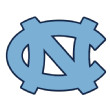With the number of one-and-done prospects and early entries to the NBA draft increasing seemingly every year, college basketball has become accustomed to turnover at the top of the sport. This coming season solidifies that notion. Of the 11 players named to either the AP or USBWA All-America teams last spring, zero return. The incoming freshman class is also not considered elite by historical standards, so we're headed for wide-open and unpredictable All-American and Player of the Year races.
 Carsen Edwards, Purdue
Carsen Edwards, Purdue
There might not be a bigger shoo-in for the preseason All-America team than Purdue's Carsen Edwards. He was one of the biggest breakout stars in college basketball last season, going from a player who split his time between the bench and the starting lineup to among the nation's best playmakers.
Heading into the 2017-18 season, Edwards was essentially the biggest factor in whether Purdue was going to have a successful season. Four starters returned from the prior season, with All-American Caleb Swanigan the lone departure. So Edwards had some pretty big shoes to fill. Of course, the 6-foot-1 Edwards had very little in common with the 6-foot-9 Swanigan -- but Edwards slotted into his spot in the starting lineup and everyone slid up a position.
And it worked perfectly. The Boilermakers had the second-most efficient offense in the country last season, and hovered near the top of the national rankings all season before being bounced by Texas Tech in the Sweet 16. Edwards didn't just step into the starting lineup, though; he became the team's star and go-to guy. It was apparent very early in the season he would be a difference-maker: He went for 25 points in 19 minutes in the second game of the season, and hit 20-plus points four more times before the new year. By the time Edwards dropped 40 points on Illinois in February, he was a national name receiving All-America buzz.
Edwards finished the season averaging 18.5 points and 2.8 assists, while shooting 40.6 percent from 3-point range.
But here's why he's a shoo-in for All-American honors this season: Those numbers are almost guaranteed to increase. Edwards is the lone returning starter from last season, as the other four were seniors. The top returning scorer for Matt Painter besides Edwards is Matt Haarms, a 7-foot-2 center who averaged 4.8 points. Even if we project sophomore guard Nojel Eastern to emerge as a major contributor and Dartmouth transfer Evan Boudreaux and a couple of freshmen to be consistent factors up front, Edwards' production isn't going anywhere.
So here's what we have: a returning star who will likely put up something close to 20 points and four assists per game on a team expected to push for an NCAA tournament berth. Oh, and he's one of just three returning players nationally who received some sort of All-American honors last season.
As we said, Carsen Edwards. Shoo-in.
 Tyus Battle, Syracuse
Tyus Battle, Syracuse
With the advent of positionless basketball, the strict criteria of what constitutes a point guard, shooting guard, etc. is irrelevant nowadays. With that said, there are still lead guards, wing scorers, forwards and big men. And heading into the 2018-19 season, it's difficult to find elite wing scorers in college basketball. There are plenty of high-level playmakers and scoring point guards, led by Purdue's Carsen Edwards. Looking at last season's All-America teams, the first five guards you hit are all point guards -- and they're all off to the professional ranks. There just aren't a ton of elite off-ball guards out there this season.
Which brings us to our pick: Syracuse's Tyus Battle.
The 6-foot-6 New Jersey native took his game up a notch as a sophomore last season, picking up the slack left by the departures of five of the team's top six scorers. Battle posted excellent numbers, averaging 19.2 points while also making 2.1 assists on a nightly basis. It helped that Syracuse had a fairly narrow offensive pecking order, with Battle, Oshae Brissett and Franklin Howard handling nearly 75 percent of the scoring load last season. But despite ugly shooting numbers -- 39.9 percent from the field -- he wasn't inefficient on the offensive end.
Moreover, Battle had boundless energy: He led the nation in minutes. Here's one of the most impressive stats you'll see this preseason: Over Syracuse's final 31 games (after Geno Thorpe left the program), Battle sat out a total of 10 minutes. He played at least 40 minutes in 25 of those games. And considering three of those games went to overtime, Battle averaged more than 40 minutes per game over Syracuse's final 31 games.
This season, Jim Boeheim should have some more weapons to take the pressure off Battle. ESPN 100 guard Jalen Carey enters the fold, as does East Carolina transfer Elijah Hughes, who sat out last season. Brissett and Howard both return.
So maybe Battle doesn't play 40 minutes or shoot 16 times every night. Some of the pressure will be taken off his shoulders, and his efficiency could move closer to his freshman season, a campaign that drew statistical comparisons to the likes of Gary Harris, Aaron Harrison and Jodie Meeks at KenPom.com.
Bottom line, Battle will be the focal point of the offense on a team that should be in the top 15-20 all season long.
 RJ Barrett, Duke
RJ Barrett, Duke
There is a segment of college basketball fans that still pushes for patience with freshmen, that believes newcomers should "prove it" before anointing them with preseason Player of the Year or All-American honors. The numbers don't really back that up, however. Since 2007, at least one freshman has been named a first-team consensus All-American each year. The 2009 team was a significant outlier, while 2013 still had two freshmen on the second team.
In other words, we need a freshman. And this year's pick is clear: Duke's RJ Barrett.
It's easy to just pick the No. 1 incoming freshman and say he will be the best newcomer, but in this case, the argument is overwhelming. Barrett has been considered the No. 1 prospect in his class for years, and when he decided two summers ago to reclassify from 2019 to 2018, he moved from No. 3 to No. 1 in short order following his reclassification.
The 6-foot-7 Canada native has the bloodlines. His father, Rowan, played at St. John's and then went overseas for 11 seasons in various European and South American leagues. His mother ran track in college. On top of that, Barrett is the godson of Hall of Famer Steve Nash.
Barrett is a winner. He dominated the United States at the FIBA U19 Men's Basketball World Cup in 2017, finishing with 38 points, 13 rebounds and 5 assists in a semifinal win for Canada. Barrett followed that up with 18 points and 12 rebounds in the gold-medal game against Italy. On the high school side, he led Montverde Academy (Florida) to an undefeated season and national championship last season, going for 25 points and 15 rebounds in the championship game of the Geico High School Nationals.
What separates Barrett from his peers is not just his scoring ability (even though he led the Nike EYBL in scoring in 2017), but his all-around game and continued improvement. He locks in on the defensive end, causing turnovers and contesting shots. He has improved his perimeter jumper and expanded his offensive game. He also brings leadership qualities to the table.
How will this all translate to the college game? That's always a question with freshmen, but Barrett looked the part in Duke's preseason trip to Canada, averaging 30.7 points in three games.
He won't put up those numbers during the season, but he'll still be an All-American.
 Caleb Martin, Nevada
Caleb Martin, Nevada
Duke, Syracuse, North Carolina, Purdue ... Nevada?
Those are the schools represented on our preseason first-team All-America team, and yes, this is the one that might raise some eyebrows. But by this point, everyone knows how good Nevada is expected to be this season. The Wolf Pack advanced to the Sweet 16 last season, beating Texas in overtime and edging Cincinnati by two before falling to eventual Final Four participant Loyola Chicago by one point. Eric Musselman brings back nearly his entire starting lineup and most of his key pieces from that team, while also adding five transfers and three freshmen -- including a top-50 recruit who chose Nevada over the likes of California, Arizona and UCLA. The Wolf Pack are a legitimate preseason top-10 team, at the very least.
So a preseason top-10 team having a preseason All-American -- or potential Player of the Year -- shouldn't come as a surprise, and Caleb Martin fits the bill.
Martin, a 6-foot-7 former NC State transfer, was electric in his first season in Reno. Martin -- who plays alongside his twin brother, Cody -- averaged 18.9 points, 5.4 rebounds and 2.6 assists last season. He shot 40.3 percent from 3-point range and proved to be a matchup nightmare for opponents on a nightly basis. Because of his ability to handle the ball on the perimeter, make shots from behind the arc, or go off the dribble and score at the rim, he's overwhelming for most defenders in the Mountain West.
Martin was remarkably consistent. He scored in single digits just three times all season, while also never scoring more than 28 points in a game. He was efficient despite heavy usage, with a 59.0 percent true-shooting percentage.
There are some questions, of course. With the influx of talent, will Martin's numbers and playing time diminish? Musselman used mostly a seven-man rotation last season, with Martin playing 80 percent of minutes. There will be more guys looking for shots, too. The five transfers eligible this season all averaged between 13.2 and 20.3 points at their previous stops. With more size and ball handlers on the roster, Musselman could play a more traditional lineup as opposed to the versatile, positionless version he used last season that made Martin so effective. This is all great news for Nevada's chances at a Final Four, but could knock Martin's personal numbers back a bit.
That's not stopping us from naming him a preseason All-American, though. Even with a slight drop-off, the best player on a top-eight team with Final Four hopes is deserving of this spot.
 Luke Maye, North Carolina
Luke Maye, North Carolina
No one expected anything like this for Luke Maye. Maye was a borderline top-100 player coming out of high school, and had only a few high-major scholarship offers. But he committed to North Carolina as a walk-on, as his father played quarterback for the UNC football team in the 1980s. He earned a scholarship, but was still sparingly used as a freshman and played a bench role as a sophomore.
Had Maye's career highlight at North Carolina been his jumper with 0.3 seconds left to beat Kentucky in the 2017 Elite Eight, that would have still been an impressive career.
But that hasn't quite been the case.
Maye was arguably the biggest surprise breakout star of last season, averaging 16.9 points, 10.1 rebounds, 2.4 assists while shooting 43.1 percent from 3. Considering he put up 5.5 points and 3.9 rebounds as a sophomore, it's fair to say no one saw Maye's junior-season stardom coming. It didn't take him long to become a national name at the start of last season, though. He opened with 26 points and 10 boards against Northern Iowa, and had 28 points, 16 rebounds and 5 assists against Arkansas in the PK80. By the time he was putting up 30 and 15 in a couple of ACC games, Maye was a clear-cut All-American candidate.
That should carry over to the 2018-19 season -- and the scary thing is Maye left some meat on the bone last season. Maye struggled in some high-profile contests last season, scoring eight or fewer points against Michigan State, Virginia, Clemson, Notre Dame and Miami. He shot just 8-for-25 from the field in the NCAA tournament.
Given how good Maye was last season despite the subpar games, improvement against top opponents could put him in play for national Player of the Year honors since Carolina is likely to be in the top 10 once again, pushing for an ACC title.
He does lose veteran point guard Joel Berry II, but five-star freshman Coby White should provide playmaking. Elite freshman Nassir Little will take some of the pressure off Maye at both ends of the floor, and Kenny Williams and Cameron Johnson are back in the lineup. Maye's role shouldn't change much.
We're not ready to anoint him Player of the Year just yet, but walk-on to first-team preseason All-American is impressive enough.
Second team
Shamorie Ponds, St. John's: There might not be a better one-on-one scorer in the country. Ponds averaged 21.6 points and 4.7 assists -- including a four-game stretch in February in which he put up 44.7 points against three top-10 teams and Marquette.
Tremont Waters, LSU: Will Wade is bringing in an elite recruiting class, but Waters will still be the catalyst for the Tigers' NCAA tournament push. He's impossible to keep out of the lane and does not shy away from traffic despite his size.
Dedric Lawson, Kansas: The last time we saw Lawson, he was putting up one of the most productive seasons in college basketball at Memphis: 19.2 points, 9.9 rebounds, 3.3 assists. Will those numbers translate to Kansas? He'll be the go-to guy.
Grant Williams, Tennessee: The reigning SEC Player of the Year, Williams simply gets it done every night in the paint. He's as solid as they come, but also showed he can take over a game if necessary, going for 37 points against Vanderbilt in January.
Ethan Happ, Wisconsin: The Badgers took a step back last season, but Happ improved on an individual basis. He saw an increase in usage, but was as efficient as ever and got teammates involved. Happ will have to be the key for a return to the NCAA tournament.
Third team
Kyle Guy, Virginia: One of three returning All-Americans (along with Edwards and Maye), Guy will likely have a bad taste in his mouth after the UMBC loss. A step forward from De'Andre Hunter could also free up some more open looks for Guy.
Romeo Langford, Indiana: Hoosier Nation was ecstatic when Langford decided to stay home for college, and Archie Miller will count on him from day one. He's a big-time scorer who won Indiana Mr. Basketball honors as a senior after averaging 35.5 points.
Eric Paschall, Villanova: Jay Wright always seems to have breakout stars in his back pocket, and Paschall seems like the most likely candidate after drawing rave reviews for his play over the summer. Fun fact: Paschall ranked top three in the Big East in both 2-point and 3-point shooting percentage.
Rui Hachimura, Gonzaga: Hachimura has been pegged as a future star for a couple of years now, and this should be the season he truly takes the next step. A projected lottery pick, Hachimura is also hoping to be just the second Japanese-born player to play in the NBA.
Reid Travis, Kentucky: We had to pick someone from Kentucky, right? The Wildcats are going to be deep and balanced, but expect Travis to take on a leadership role early. He averaged 19.5 points and 8.7 rebounds at Stanford last season, and should continue his dominance in the SEC.
